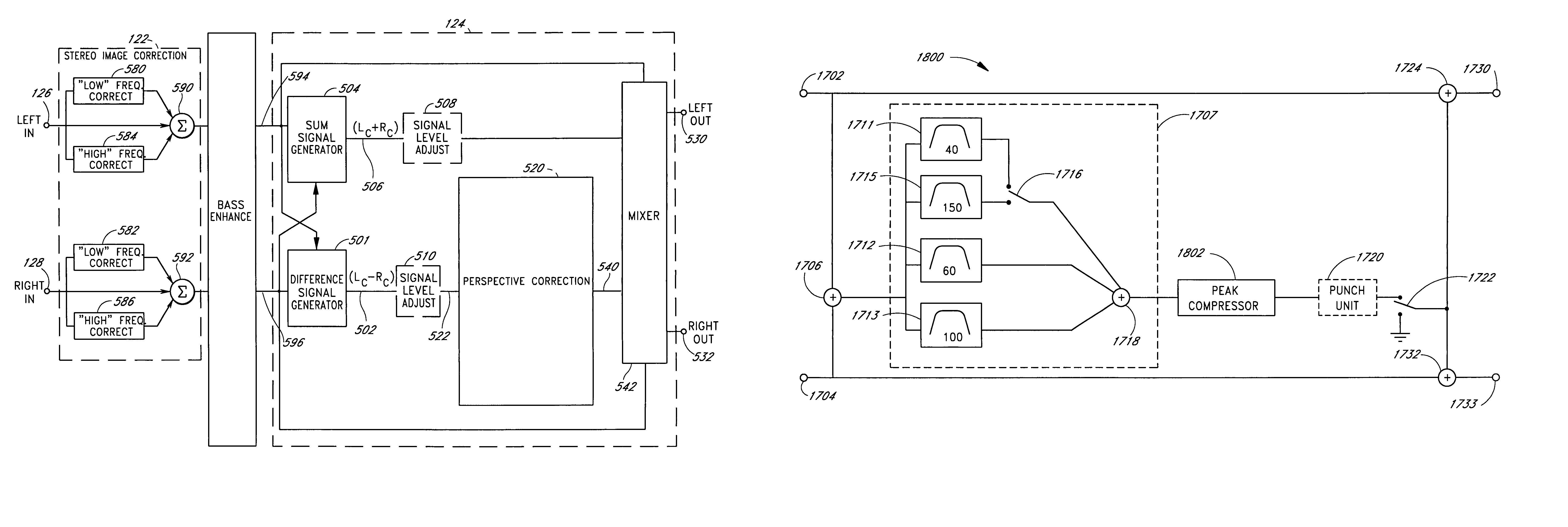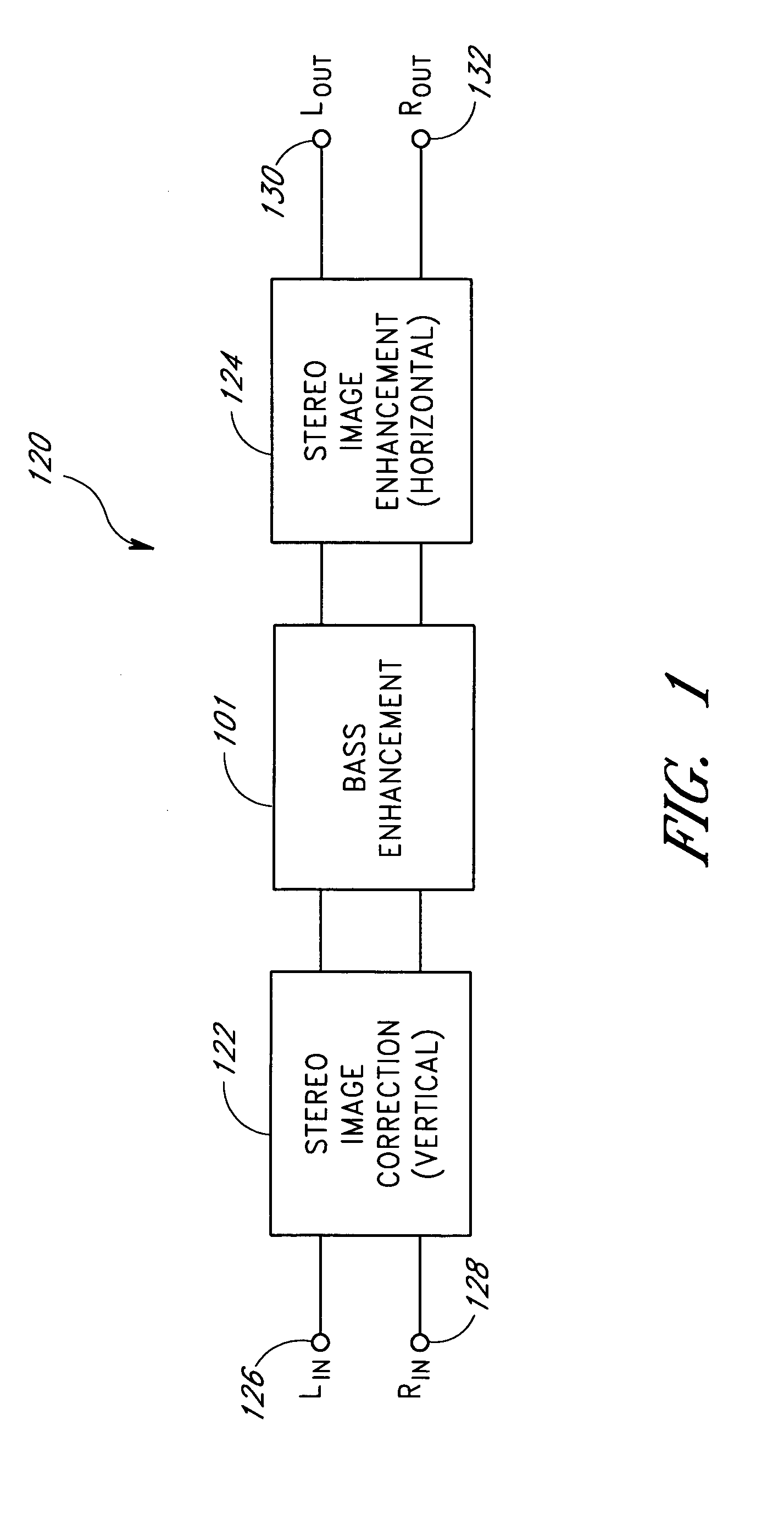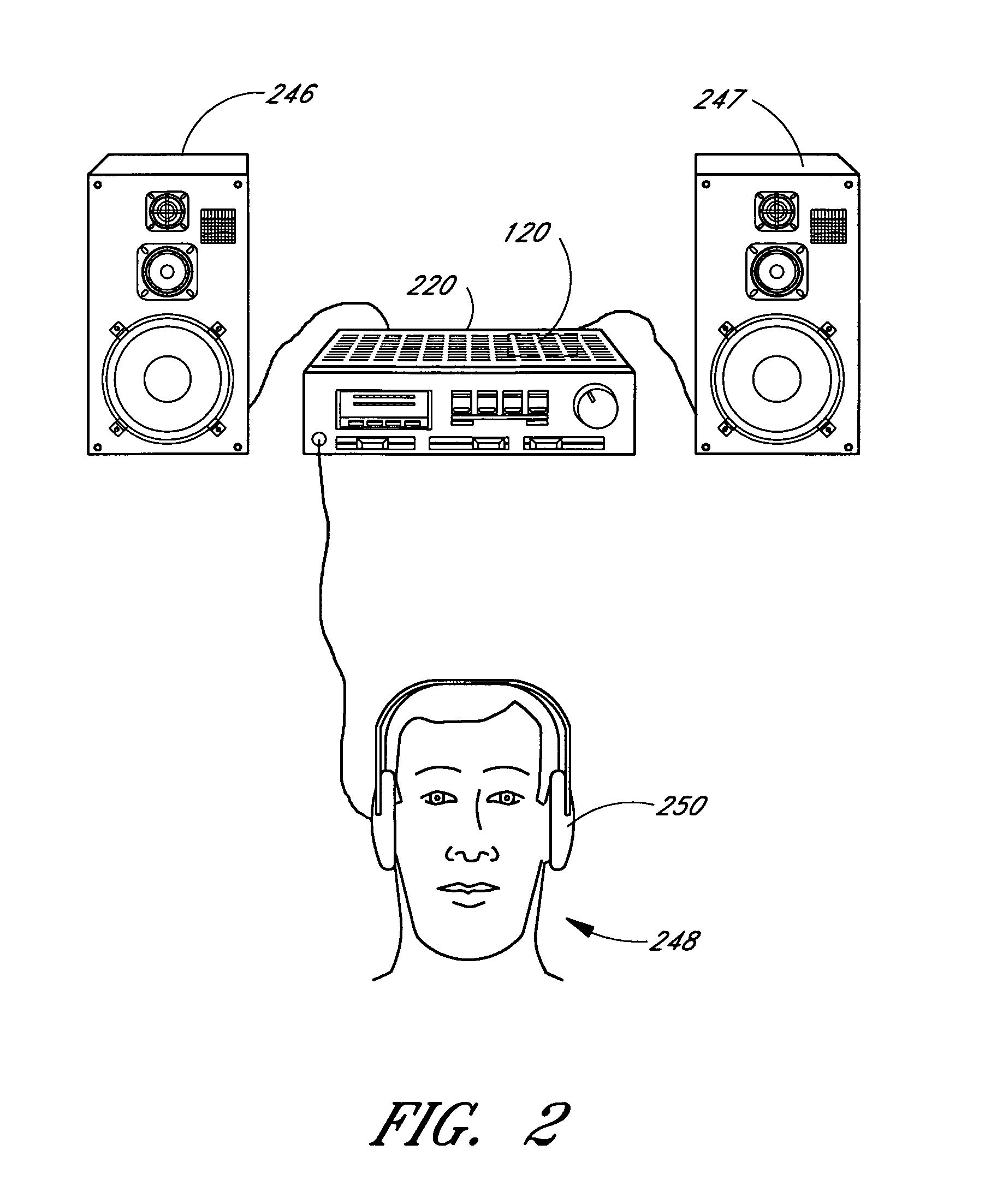Acoustic correction apparatus
a correction apparatus and acoustic technology, applied in the field of audio enhancement systems, can solve the problems of distorted sound pressure response over the audible frequency spectrum, degrade the quality of reproduced sound as perceived by the listener, and the inability to reproduce reverberant sounds, etc., to achieve the effect of enhancing the quality of audio sound
- Summary
- Abstract
- Description
- Claims
- Application Information
AI Technical Summary
Benefits of technology
Problems solved by technology
Method used
Image
Examples
Embodiment Construction
[0107]FIG. 1 is a block diagram of an acoustic correction apparatus 120 comprising, in series, a stereo image correction system 122, a bass enhancement system 101, and a stereo image enhancement system 124. The image correction system 122 provides a left stereo signal and a right stereo signal to the bass enhancement unit 101. The bass enhancement unit outputs left and right stereo signals to respective left and right inputs of the stereo image enhancement device 124. The stereo image enhancement system 124 processes the signals and provides a left output signal 130 and a right output signal 132. The output signals 130 and 132 may in turn be connected to some other form of signal conditioning system, or they may be connected directly to loudspeakers or headphones (not shown).
[0108]When connected to loudspeakers, the correction system 120 corrects for deficiencies in the placement of the loudspeakers, the image created by the loudspeakers, and the low frequency response produced by t...
PUM
 Login to View More
Login to View More Abstract
Description
Claims
Application Information
 Login to View More
Login to View More - R&D
- Intellectual Property
- Life Sciences
- Materials
- Tech Scout
- Unparalleled Data Quality
- Higher Quality Content
- 60% Fewer Hallucinations
Browse by: Latest US Patents, China's latest patents, Technical Efficacy Thesaurus, Application Domain, Technology Topic, Popular Technical Reports.
© 2025 PatSnap. All rights reserved.Legal|Privacy policy|Modern Slavery Act Transparency Statement|Sitemap|About US| Contact US: help@patsnap.com



